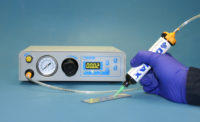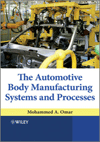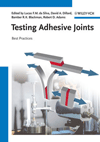What if you could take the best materials available, combine them anyway you need to, and produce the most efficient, light-weight structures imaginable? What if you could assemble those structures with adhesives? You can, with fiber-reinforced composites.
What if you could take the best materials available, combine them anyway you need to, and produce the most efficient, light-weight structures imaginable? What if you could assemble those structures with adhesives? Welcome to the 21st century.
The development of fiber-reinforced composites is not equal to that of smelting iron, but the advent of composites significantly changed the scope of materials engineering. Wood, the most common composite, required builders to design structures based on the tensile and compressive properties of unidirectional cellulosic fibers. Out-of-plane flexural deficiencies were overcome by using more or thicker pieces, albeit with a weight penalty.
Composite structure allows for directed fiber placement to tune load management because most of the performance comes from the fibers. The resin matrix holds the fibers together. Carbon-fiber reinforced composites have a tensile modulus roughly equal to that of aluminum, but at only 60 percent of the weight. They have about half the modulus of titanium at 40 percent of the weight, and about 30 percent that of steel at 30 percent of the weight. Because composites are usually layered structures, with the layers only being held together by resin, their out-of-plane tensile properties are limited by the interlaminar shear properties of the resin. However, they offer attractive strength, stiffness and weight management if parts are designed correctly.
In those instances where composites cannot handle structural loads, they can be combined with metals in a hybrid design. Mechanical fasteners are the most common joining method. However, bonded hybrid structures are beginning to appear, as finite element analysis (FEA) techniques boost confidence levels. Combined modeling and testing demonstrate performance advantages for bonded composite-metal structures.
To produce bonded hybrid structures, the directional properties of the composite must be accounted for in designing the composite-metal joint. Adhesives work well when loaded in shear, so the composite fiber alignment in the joint region should favor shear load transfer. Similarly, the joint design should discourage out-of-plane peel loads, which are undesirable for adhesives. Overdesign can allow for temperature and humidity effects on both the composite and the adhesive. The metal must have adequate corrosion protection and priming to preserve the integrity of the bond.
FEA modeling enables us to unravel this complexity using the measured properties of the materials, and a model of the joint performance, at both the norm and the extremes of the performance envelope. Proof structures can be produced to test the validity of the model under ambient and extreme conditions. Iterative changes to the model can then be made and the process repeated until the predictability of the model is confirmed.
While complex, once the tools are known and practiced, the approach becomes an engineering exercise. Good results can be achieved, as we have been fortunate to experience here at EWI. More than once, we have shown that the performance of a bonded structure exceeds that of mechanical fasteners in weight savings, materials and fabrication cost. Good engineering design forces the failure into the composite, meaning that the adhesive bond is stronger and more durable than the materials.
That’s as good as it gets!
Once the mechanical issues are tackled, there remains the question of reliability. There is admittedly a problem in predicting performance with adhesives. The conservative approach is to take the worst properties of the materials and design around those properties. Increasing the joint dimensions produces a weight penalty but increases the factor of safety. Once the model predicts, and a structure confirms, the required factor of safety, the designer can have confidence the joint will perform as expected even under severe load transgressions.
Another confidence-builder is the use of nondestructive evaluation (NDE), most commonly ultrasonic inspection. Ultrasonic NDE of hybrid joints is challenging because the materials have different properties and ultrasonic waves are sensitive to material modulus. The joints are often accessible from one side only, meaning the interrogating wave travels through metal, then adhesive, bounces off composite, and reflects back. Multiple interfaces produce multiple reflections and considerable attenuation. Phased array and signal processing techniques produce enhanced detection and resolution capabilities in complex joints.
The days of “what if” are giving way to “when do we start.” Advanced modeling, interactive testing and NDE offer new opportunities for design and use of composite-metal hybrid structures. The 21st century has arrived.
Get our new eMagazine delivered to your inbox every month.
Stay in the know on the latest assembly trends.
SUBSCRIBE TODAY!Copyright ©2024. All Rights Reserved BNP Media.
Design, CMS, Hosting & Web Development :: ePublishing



